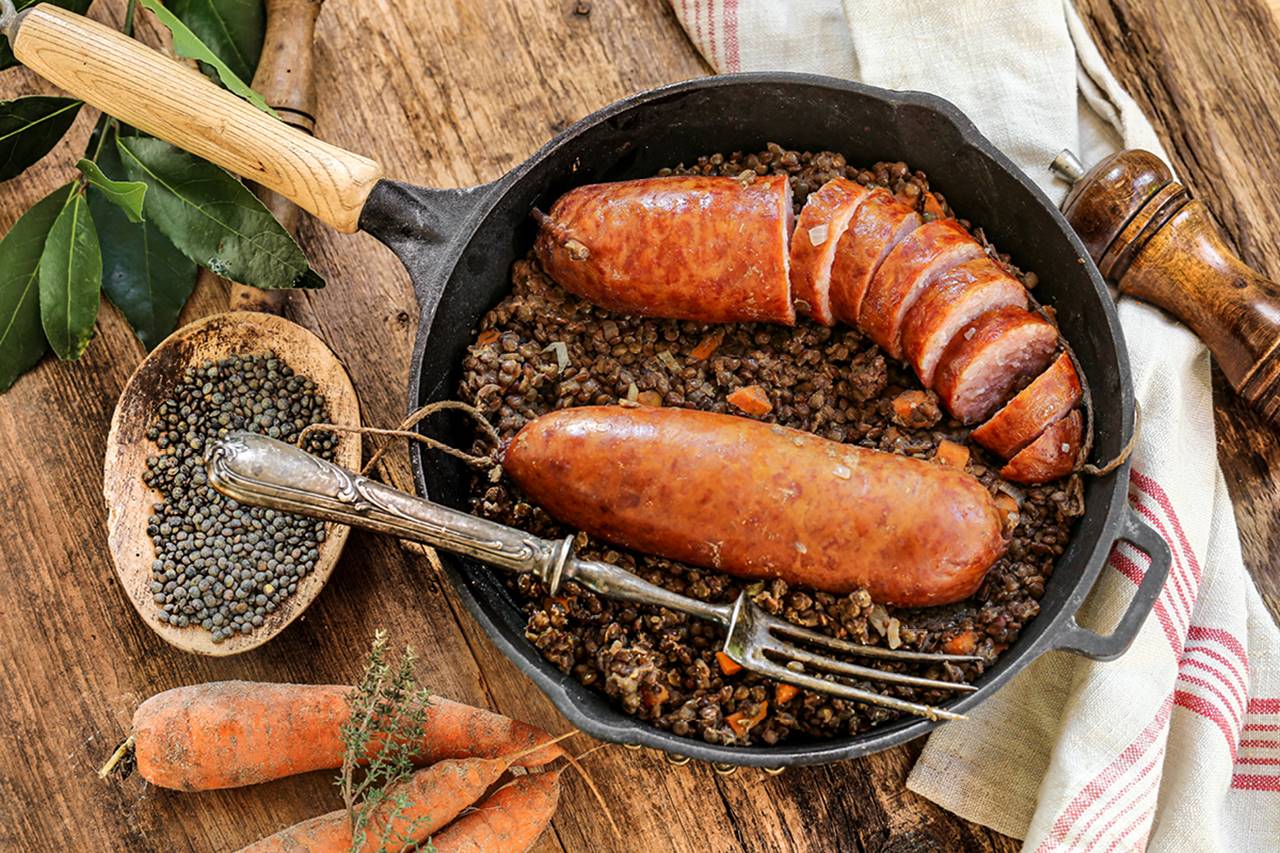Culinary Delight: Fat Ends and After Ends
Did you know that some of the best artisan sausages in Spain and France are made in the last section of the bowel package: the fat end and the after end?

The fat end and after end may be the last piece of the pig’s digestive tract, but the sausages made in them are for many the epitome of culinary delight. We asked Pablo Sanchez, Managing Director of Van Hessen Spain, to tell us more about the Cular and other sausages made with fat ends and after ends.
“There is an interesting connection between Germany and the famous Cular sausage in Spain,” says Pablo. “There are no better fat ends than those that come from German slaughterhouses. They are stuffed here with meat from the Iberico pig, but the fat end itself comes from Germany. It’s common knowledge that those are the best casings.” Since the Cular sausage is very popular in Spain, the country is an important outlet for fat ends and after ends. ‘Most sausage makers who produce the Cular are concentrated in Salamanca and Extremadura because that is the region where Iberico pigs are slaughtered,’ Pablo explains.

“Fat ends, the first piece of the 130 cm rectum and after ends, the second half, are harvested in the gutroom. Where the small intestine is cut from the intestinal package with a knife, we pull off the fat ends and after end by hand,” Pablo says. “The small intestine is selected worldwide, while fat ends and after ends are only selected at Van Hessen’s facility in Poland.”
The obvious question is why Van Hessen goes to so much trouble to harvest fat ends and after ends and select them in a separate plant when the small intestine averages 19 meters instead of 130 cm. “There are two reasons why the makers of the Cular sausage want fat ends and after ends,” says Pablo. “The first reason is that the Cular needs to dry slowly over a period of 4-5 months. Iberico meat contains a lot of fat and therefore needs more time. In a small intestine, the meat would dry too quickly. The sausages are hung by a string attached to the crown, or sphincter. Without the crown with string, the fat ends are worthless to sausage makers because they cannot be hung. The second reason fat ends are preferred over the small intestine is that fat ends and after ends have a larger diameter. The Cular traditionally has a large diameter.” It is a matter of tradition, preparation and taste that sausage makers go for a larger diameter.

There are two Cular sausages: the Chorizo Cular and the Salchichón Cular. The Chorizo Cular is stuffed with lean pork mince and bacon and flavored with paprika, salt and garlic. The Salchichón Cular does not contain paprika. It is not only the Spanish Cular that is made in fat ends and after ends. There are also French sausages prepared with it. A famous sausage based on after ends in France is the Saucisson de Morteau. The Saucisson de Morteau is made in an after end sealed with a special wooden peg called a “cheville.”
According to Pablo, “In the production process, Van Hessen takes into account the special requirements and needs of each specialized local market, such as leaving the crown intact. In this way, we can supply fat ends and after ends to large sausage makers like Incarlopsa, but also to the smaller local artisan sausage maker. Pablo is clear about which sausage is his favorite: “Oh, that’s easy,” he smiles, “I absolutely love the Chorizo Cular.”
Make your own sausage
Download the recipe and make your own Morteau.